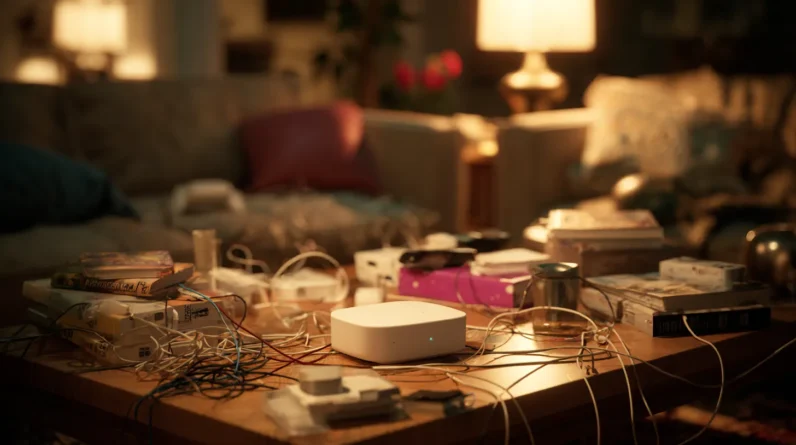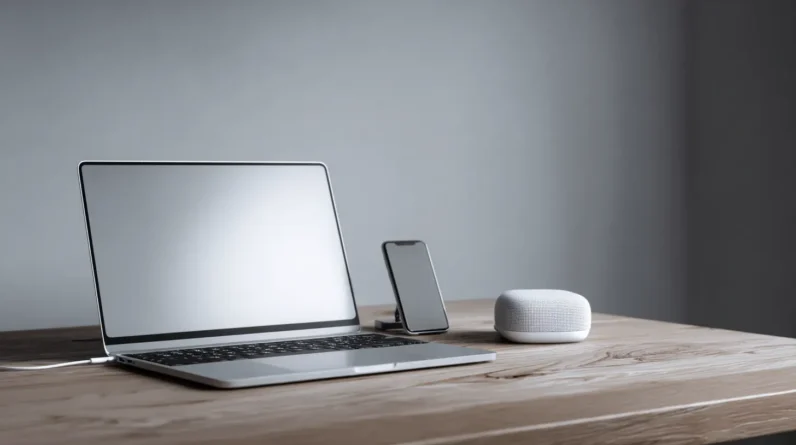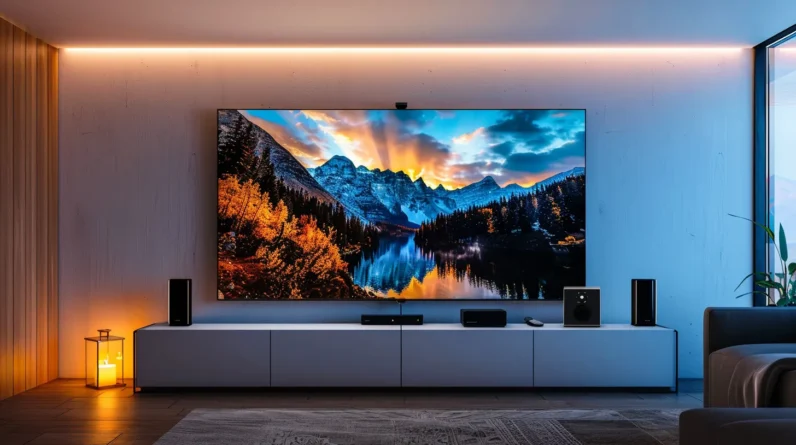
Before we install smart devices in our homes, we’ll need to evaluate several critical requirements. We must guarantee our network infrastructure supports minimum 100 Mbps download speeds and implements WPA3 encryption with VLAN capabilities. We’ll need to choose a primary ecosystem (Alexa, Google Home, HomeKit, or SmartThings) and verify device compatibility across our intended setup. Security measures, including network segmentation and regular firmware updates, are essential to protect against cyber threats. We should also calculate both initial costs and long-term expenses, including cloud storage and device replacement cycles. These foundational elements form just the beginning of a secure, efficient smart home implementation.
Your Home’s Internet Infrastructure
Three critical components form the foundation of a secure smart home network: reliable internet service, a modern Wi-Fi router, and proper network segmentation. We’ll want a minimum of 100 Mbps download speed from our ISP to handle multiple smart devices streaming data simultaneously. For the router, we need one that supports WPA3 encryption, dual-band connectivity (2.4GHz and 5GHz), and VLAN capabilities.
Network segmentation is non-negotiable for security. We’ll create separate VLANs for our smart devices, keeping them isolated from our primary network where we store sensitive data. This prevents a compromised smart device from becoming an entry point for attackers. We’ll also implement MAC address filtering and disable WPS (Wi-Fi Protected Setup) to strengthen our network’s security posture.
Device Compatibility and Ecosystem
Smart device compatibility revolves around four major ecosystems: Amazon Alexa, Google Home, Apple HomeKit, and Samsung SmartThings. Before purchasing any smart devices, we’ll need to commit to a primary ecosystem that’ll serve as our home’s central hub. Each platform has specific device requirements and protocols that determine which products will integrate seamlessly.
We’ll want to check each device’s compatibility list carefully, as some products work with multiple ecosystems while others are exclusive to one platform. It’s essential to verify both the hardware and software compatibility, including wireless protocols like Zigbee, Z-Wave, or Wi-Fi. We must also consider whether devices require additional bridges or hubs to connect to our chosen ecosystem, as this affects both setup complexity and overall system reliability.
Security and Privacy Concerns
Every connected device in our smart home network represents a potential entry point for cybersecurity threats. We must prioritize robust security measures by implementing WPA3 encryption, regularly updating firmware, and creating complex, unique passwords for each device. It’s vital to segment our smart home network from our primary network using VLANs or separate routers.
We’ll need to scrutinize each device’s privacy policy, understanding exactly what data they collect and how it’s used. Let’s disable unnecessary features, especially voice recordings and location tracking when not required. We should verify that our devices use encrypted communications and authenticate all connections. By maintaining an inventory of connected devices and regularly auditing their security settings, we’ll minimize vulnerabilities. Two-factor authentication, when available, adds an essential layer of protection to our smart home ecosystem.
Budget and Long-Term Costs
When planning a smart home setup, we’ll need to carefully analyze both initial investments and recurring expenses to guarantee sustainable implementation. Let’s consider hardware costs: smart hubs ($50-200), sensors ($20-50 each), smart switches ($25-60), and cameras ($100-300). We must also factor in professional installation fees if required.
Recurring costs include cloud storage subscriptions ($3-10 monthly per device), professional monitoring services ($15-35 monthly), and potential firmware upgrades. We’ll need to account for increased electricity consumption from always-on devices and Wi-Fi router upgrades to handle multiple connected devices. Additionally, we should budget for device replacements every 3-5 years as technology evolves and batteries degrade. Smart home insurance premiums might also increase due to added complexity and potential cybersecurity risks.
Home Network Management
A robust home network’s foundation begins with proper segmentation and security protocols to protect smart devices. We’ll need to implement VLANs to isolate IoT devices from our primary network, reducing potential attack surfaces. We’re also setting up WPA3 encryption and changing default passwords on all network equipment.
For peak performance, we’re positioning our router centrally and deploying mesh Wi-Fi nodes strategically to eliminate dead zones. We’ll monitor bandwidth allocation through Quality of Service (QoS) settings, prioritizing critical devices over less essential ones. Let’s configure automated network monitoring tools to alert us of suspicious activities and maintain detailed logs of device connections. We’re also establishing regular security audits and firmware updates for all network components, ensuring our smart home’s infrastructure remains resilient against emerging threats.
Conclusion
Wouldn’t it be catastrophic if our smart home became a gateway for cybercriminals? We’ve outlined critical infrastructure requirements, ecosystem compatibility, security protocols, cost analysis, and network management strategies that form the foundation of a secure smart home deployment. We must carefully evaluate these technical considerations and implement robust security measures before connecting any IoT devices to our networks. Proper planning now prevents potential vulnerabilities later.







